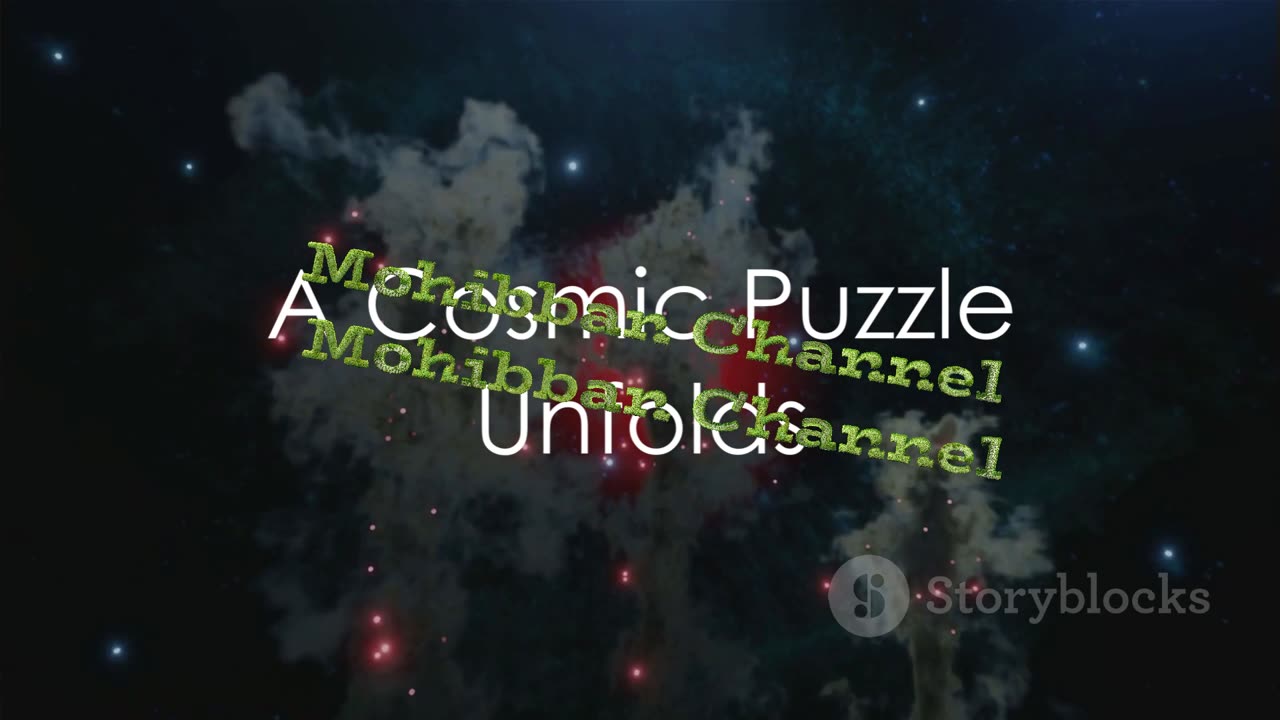Premium Only Content

Explore Universe. How Vast Beyond Imagination
Hubble Space Telescope
The Hubble Space Telescope is a space telescope that was launched into low Earth orbit in 1990 and remains in operation. It is one of the largest and most versatile telescopes, renowned for its stunning images and groundbreaking discoveries of the universe. Here are some facts about the Hubble Space Telescope:
It is named after Edwin Hubble, an American astronomer who proved that the universe is expanding and that there are galaxies beyond the Milky Way.
It is a joint project of NASA and the European Space Agency (ESA), with contributions from other countries and institutions.
It orbits about 340 miles (547 km) above Earth’s surface, completing one revolution every 95 minutes.
It has a 2.4-meter (7.9-foot) primary mirror and four main instruments that can observe wavelengths of light ranging from ultraviolet to near-infrared.
It has made over 1.4 million observations and captured more than 15,000 scientific papers.
It has revealed the age, size, and shape of the universe, the existence of dark matter and dark energy, the formation and evolution of stars and planets, the diversity and history of galaxies, and many other cosmic wonders.
Pillars of Creation
The Pillars of Creation are a famous astronomical image taken by the Hubble Space Telescope in 1995. They show three columns of gas and dust in the Eagle Nebula, a star-forming region about 7,000 light-years away from Earth. The pillars are named so because they are where new stars are being born, while also being eroded by the radiation from nearby stars.
The image is one of the most iconic and popular images from Hubble and has been featured in many media and cultural products. It has also inspired scientific curiosity and exploration, as astronomers have used different telescopes and wavelengths of light to study the pillars and their surroundings.
Some of the interesting facts about the Pillars of Creation are:
They are about 5 light-years tall, which is equivalent to about 30 trillion miles or 50 trillion kilometers.
They are mostly hydrogen gas, with traces of other elements such as oxygen, carbon, and nitrogen. The colors in the image represent the different temperatures and densities of the gas.
They are part of a larger structure called the Eagle Nebula, also known as Messier 16 or M16. The nebula spans about 70 light-years across and contains about 8,000 stars.
They are named after a phrase used by Charles Spurgeon, a 19th-century preacher, who described the birth of Christ as “the condescension of Christ”. He said: “He who created all things, and bears up the pillars of creation, hath now become so weak, that He must be carried by a woman!”
They have been observed by different telescopes and instruments over the years, such as the Herschel Space Observatory, the Chandra X-ray Observatory, and the James Webb Space Telescope. These observations have revealed new details and perspectives of the pillars, such as their three-dimensional shape, their hidden stars, and their fate.
Hubble Ultra Deep Field
The Hubble Ultra Deep Field (HUDF) is an image of a small region of space in the constellation Fornax, containing an estimated 10,000 galaxies. The Hubble Space Telescope collected the original data for the image from September 2003 to January 2004. It is the deepest image of the universe ever taken, showing galaxies that existed about 13 billion years ago, shortly after the Big Bang1
The HUDF image reveals the diversity and history of galaxies, from the earliest and most distant ones to the more recent and nearby ones. It also provides clues about the origin and evolution of the universe, such as the rate of expansion, the presence of dark matter and dark energy, and the formation of stars and planets.
The HUDF image was created by combining hundreds of exposures taken by two cameras on the Hubble Space Telescope: The Advanced Camera for Surveys (ACS) and the Wide Field Camera 3 (WFC3). The image covers a tiny area of the sky, about one-tenth of the size of the full moon, but contains thousands of galaxies of various shapes, sizes, colors, and ages. Some of the galaxies are so faint that they are invisible to the human eye, and can only be detected by the powerful telescope.
The HUDF image has been updated and improved several times since its first release in 2004. In 2009, the image was extended to include infrared observations from the WFC3, which allowed astronomers to see even more distant and older galaxies. In 2012, the image was enhanced with more data from the ACS and WFC3, creating the eXtreme Deep Field (XDF), which shows galaxies from 13.2 billion years ago. In 2014, the image was expanded to include ultraviolet observations from the WFC3, which revealed more details of the star formation and evolution in the galaxies. In 2019, the image was refined with better processing and subtraction of the background light, resulting in the ABYSS Hubble Ultra Deep Field, which shows some galaxies almost twice as big as previously measured.
Butterfly Nebula
The Butterfly Nebula is a fascinating object in the night sky. It is a type of planetary nebula, which is a cloud of gas and dust that forms when a star like the Sun runs out of fuel and ejects its outer layers. The Butterfly Nebula is also known as NGC 6302, and it is located about 3,400 light-years away from Earth in the constellation Scorpius12.
The Butterfly Nebula has a bipolar structure, which means it has two lobes that extend from a central region. The lobes look like the wings of a butterfly, and they span about three light-years across. The lobes are made of different elements, such as oxygen, nitrogen, and carbon, that glow in different colors when they are heated by the intense radiation from the central star.
The central star of the Butterfly Nebula is one of the hottest stars known, with a surface temperature of over 250,000 degrees Celsius. It is a white dwarf, which is the remnant of a star that was once about five times more massive than the Sun. The white dwarf is surrounded by a dense disc of gas and dust, which blocks its light from our view. The disc may have shaped the outflow of the lobes, creating the hourglass-like appearance of the nebula.
The Butterfly Nebula is a beautiful and complex example of how stars evolve and die. It is also a source of scientific interest, as it reveals the chemical composition and physical processes of stellar winds and jets. The nebula can be observed with a small telescope. Still, it is best seen with powerful instruments like the Hubble Space Telescope, which has captured stunning images of the nebula in high resolution and detail.
The Butterfly Nebula (Poem)
A star that once shone bright and proud
Now, it sheds its skin and forms a shroud
A cosmic butterfly emerges from the dust
Its wings of fire and colors robust
The central star, so hot and fierce
-
 19:54
19:54
Forrest Galante
6 hours agoPrivate Tour Of America's Best Marine Animal Facility
1.75K3 -
 9:25
9:25
MattMorseTV
1 day ago $5.46 earnedSupreme Court just DROPPED a NUKE.
9.59K40 -
 13:25
13:25
Nikko Ortiz
1 day agoWorst Karen TikTok Fails
4.55K5 -
 40:24
40:24
The Connect: With Johnny Mitchell
2 days ago $17.41 earnedInside The WORST Drug-Infested Slums Of Medellin, Colombia
54.5K29 -
 4:14
4:14
GritsGG
12 hours ago2 Warzone Easter Eggs! How to Find Them EASILY!
994 -
 LIVE
LIVE
Lofi Girl
2 years agoSynthwave Radio 🌌 - beats to chill/game to
133 watching -
 1:45:43
1:45:43
Man in America
12 hours agoThe DISTURBING Truth About Parasites — Live Q&A w/ Dr. Jason Dean
66.5K37 -
 7:13:47
7:13:47
SpartakusLIVE
9 hours ago#1 Mountain of Muscle with HUGE Legs saves your weekend from complete BOREDOMNight HYPE
39.4K1 -
 47:42
47:42
Sarah Westall
9 hours agoFreedom or Slavery? AI will Change Everything w/ Trump Senior Advisor Marc Beckman
52.2K10 -
 2:23:20
2:23:20
vivafrei
16 hours agoEp. 285: Visa Revocation No-Go! Sortor Arrested! Ostrich Crisis! 2A Win! Comey Defense & MORE!
111K103
